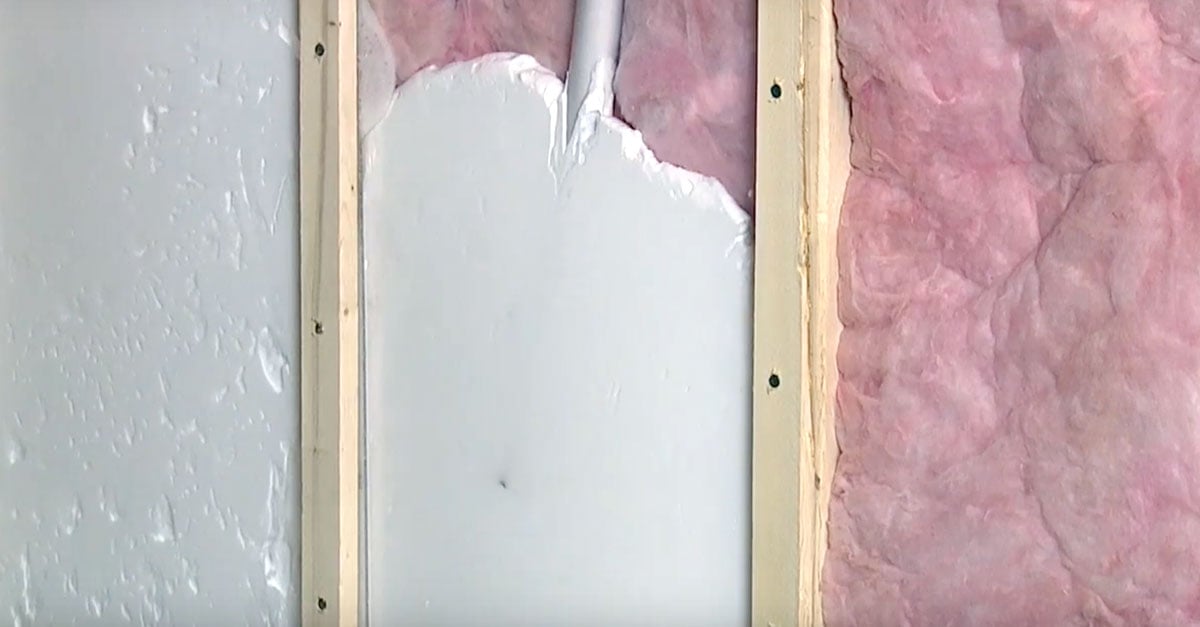The Top Three Reasons to Add Insulation to Existing Walls When Residing a House
injection foam insulation | RetroFoam insulation | foam university


Residing your home is a significant home improvement project that not only revamps the appearance of your home but also presents an opportune moment to enhance its energy efficiency and comfort.
This is especially true when considering the addition of insulation to your existing walls.
Our RetroFoam dealers have said that many homeowners look to make these kinds of improvements together so they can plan their installation accordingly.
In this article, we'll explore the top three reasons why adding insulation during your residing project is a smart move.
Taking Advantage of Timing: A Seamless Integration
Are you thinking about adding insulation while renovating your home?
Well, guess what? It's a smart move that comes with many advantages.
It will make your project smoother and improve your home's energy efficiency, and you won't have to worry about extra demolition or unnecessary delays. This is the perfect time to optimize the comfort and sustainability of your living space while keeping disruptions to a minimum.
Let’s jump right into why timing can be so important.
Seamless Process During Residing
One of the main reasons to consider adding insulation during a residing project is the perfect timing.
When you're doing a residing project, the existing siding is usually taken off, revealing the sheathing underneath. This gives you a great chance to easily incorporate new insulation into your home without any extra demolition or structural changes.
By taking advantage of this unique opportunity, you can improve your living space's energy efficiency and comfort, making sure it stays cozy and well-insulated for years to come.
Quick and Efficient Insulation Process
Most notably, installing injection foam insulation can be completed in just a day, allowing for minimal delay to your residing project.
This ensures that your home improvement timeline stays on track and offers added convenience. With the old siding already removed, the insulation teams can work swiftly and effectively, making the most of the easy access to your home's exterior walls.
This streamlined approach guarantees that your home will be properly insulated, promoting energy efficiency and providing a comfortable living environment.
Cost-Effectiveness: Saving Money in the Long Run
Are you searching for a fantastic opportunity to save money on your upcoming projects?
Look no further! Here are some strategic moves that can significantly reduce labor and time, ultimately providing a highly cost-effective solution for homeowners like yourself.
Not only will you discover how these strategic approaches enhance your home's energy efficiency, but you will also learn how they maximize your financial investment in the long run.
Lowered Installation Costs
The second reason to insulate during residing lies in the potential cost savings.
When insulation work is combined with a residing project, it eliminates the need for separate siding removal and reinstallation by the insulation team. This integration can significantly reduce labor costs and time, resulting in a more cost-effective project overall.
The reduced labor and time required for insulation installation translate into direct savings for you, the homeowner, making this a prime opportunity to invest in your home's comfort and energy performance.
Protecting Your Investment: Ensuring the Integrity of Your New Siding
Adding high-quality insulation before new siding installation can safeguard your investment.
By creating an additional layer of protection, insulation helps to regulate temperature, prevent energy loss, and enhance the durability of your new siding. This ensures its long-term aesthetic appeal and strengthens its structural integrity, providing peace of mind for years to come. Don't underestimate the impact of insulation - it's a wise investment that pays off in more ways than one.
Here are some ways adding insulation during a residing project can protect your investment.
Avoiding Risk to New Siding
The final reason to consider adding insulation during your residing project is the protection it offers to your new siding.
Insulating before the new siding is installed eliminates any risk of damage to the siding that might occur if it has to be removed and reinstalled for insulation purposes.
With new siding being a significant investment in your home's aesthetic and structural integrity, it's paramount to avoid any potential risks that could compromise its quality.
Insulating before the new siding installation ensures that once your beautiful new siding is in place, it remains undisturbed, securing its longevity and appearance for years to come.
A Wise Choice for Homeowners to Add Insulation to Existing Walls
Adding insulation to existing walls while residing your home is a wise decision that offers numerous benefits.
It's an opportunity to enhance your home's energy efficiency, save on installation costs, and protect your investment in new siding. Making informed choices during home improvement projects like residing can lead to significant long-term benefits for your home.
If you're planning to reside your home and are considering upgrading your insulation, we invite you to visit our website and find a local RetroFoam dealer. They can help make your home more comfortable and energy-efficient. Remember, a well-insulated home is a comfortable and cost-effective home.
Related Articles
How Often Should You Insulate Your House?
About Eric Garcia
Eric brings his knowledge and training in building science, training in spray and injection foams from the manufacturers, more than eight years installing foam insulation, as well as selling and managing in the foam insulation industry. He is also BPI and Dale Carnegie certified and has taken several building science courses, including air sealing and building envelope. Eric is the Professor of Foam on our educational YouTube series Foam University. Even when Eric is off he is usually still “working” or thinking about work, but when he can get away he enjoys camping, hiking, hunting, and woodworking.


